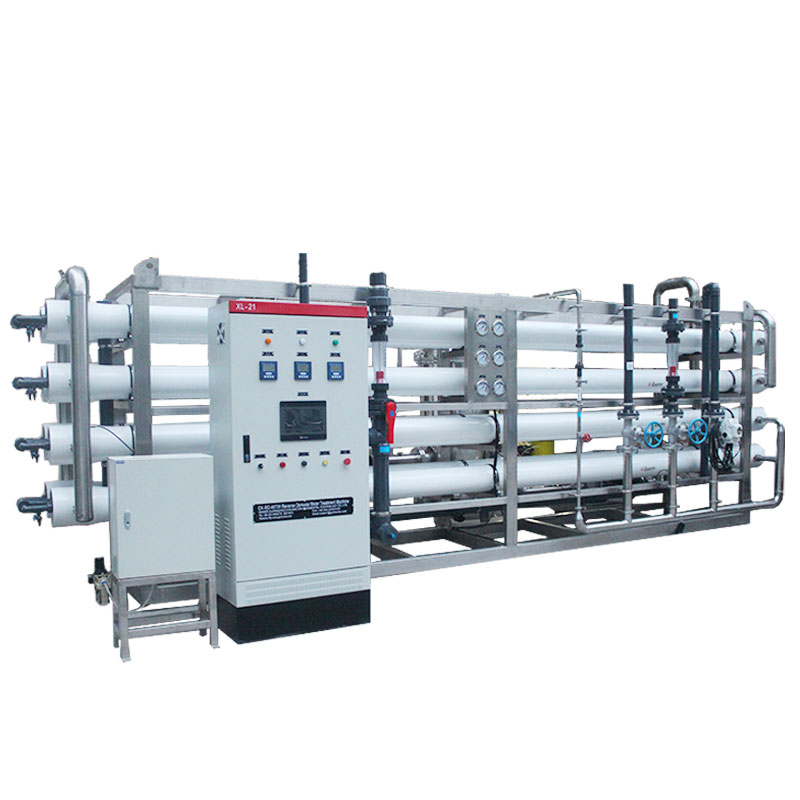What is RO water purification system?
Reverse osmosis water purification system is an efficient technology for water purification. It separates dissolved solids and impurities in water through a semipermeable membrane to obtain clean drinking water or industrial water.
1. Principle of reverse osmosis
Reverse osmosis is a physical separation technology that uses a semipermeable membrane to filter water and separate dissolved solids and impurities in the water from pure water. By applying high pressure, water is forced through a semipermeable membrane, while solid particles dissolved in the water are intercepted on the other side of the membrane, thereby purifying water.
2. Composition of reverse osmosis system
A typical reverse osmosis water purification system includes a pretreatment unit, reverse osmosis unit and post-treatment unit. The pretreatment unit is used to remove large particle impurities and sediments in the water to protect the normal operation of the reverse osmosis membrane; the reverse osmosis unit is the core component, using high pressure to separate water; the post-treatment unit is used to further purify the water quality and ensure the quality of the output water. Purity.
3. Application areas
Reverse osmosis water purification system is widely used in drinking water treatment, industrial water, seawater desalination, wastewater treatment and other fields. In places with regional water shortages or serious water pollution, reverse osmosis technology is an important means of water resource utilization and protection.
4. Advantages and Limitations
Compared with traditional water treatment methods, reverse osmosis water purification system has the advantages of high purification efficiency, easy operation, and small footprint. However, it also has limitations such as high energy consumption, large equipment investment, and strict water quality requirements. All factors need to be considered comprehensively.

How does the reverse osmosis water purification system work?
1. Selection of semipermeable membrane
The semipermeable membrane used in reverse osmosis water purification system is a key component. These membranes, usually made of polymers or other materials, have a microporous structure that blocks the passage of large molecules and solid particles but allows the passage of water molecules.
2. Application of high-pressure pump
In a reverse osmosis water purification system, high pressure is applied to the water source through a high-pressure pump, causing the water to be forced through a semipermeable membrane. This high pressure causes water molecules to pass through the pores of the semipermeable membrane, while solid particles dissolved in the water are intercepted on the other side of the membrane.
3. Water separation and purification
Due to the semipermeable membrane, water molecules can pass freely, while solutes dissolved in the water are intercepted. In this way, the water after reverse osmosis treatment is purified and most solid particles and impurities are removed, thereby obtaining clean drinking water or industrial water.
4. Post-processing process
Water treated by reverse osmosis may still contain a small amount of impurities, so it usually needs to go through post-treatment processes, such as activated carbon filtration, ultraviolet disinfection, etc., to further improve water quality.

What are the application prospects of reverse osmosis water purification system?
Reverse osmosis water purification system has important application prospects in water resources utilization and environmental protection. Here’s a closer look at this issue:
1. Water resources utilization
As global water resources become increasingly tense, reverse osmosis water purification system will become an important water resource utilization technology. Especially in arid areas or island areas, desalination technology will greatly improve local freshwater supply capabilities.
2. Environmental protection
Compared with traditional water resources development methods, seawater desalination technology has a smaller impact on the environment and will not cause over-exploitation of groundwater resources or water source pollution. Therefore, it is considered an environmentally friendly and sustainable way of utilizing water resources.
3. Industrial applications
In addition to drinking water supply, reverse osmosis water purification systems are also widely used in industrial production, such as electronic manufacturing, chemical production and other fields, to provide high-quality raw water for industrial water.
4. Technological innovation
With the development of science and technology, reverse osmosis water purification system technology will continue to innovate and improve, improve purification efficiency, reduce energy consumption and costs, thereby better meeting people's needs for clean water resources.






